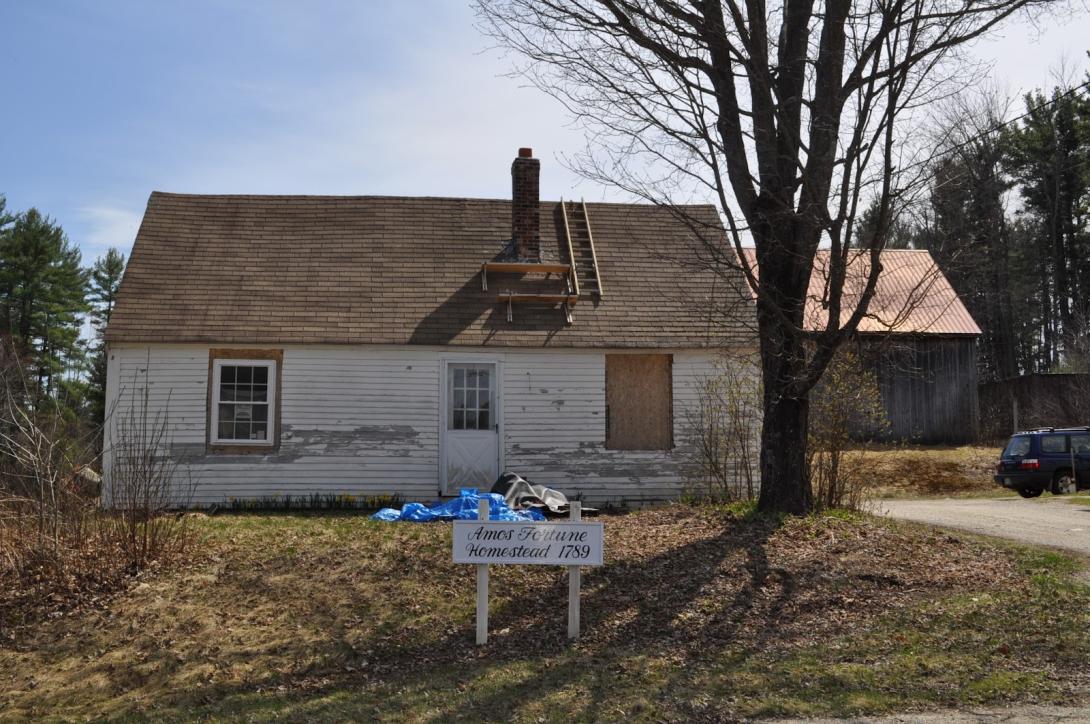Amos Fortune was about 15 years old when he was captured and taken from his home in Africa to be sold as a slave around 1725. The “voyage” to the New World was a terrifying nightmare for those onboard slave ships, lasting between two to four months. Belongings were confiscated, they were branded, chained naked together and sent belowdecks where they were tightly packed in as “cargo” usually anywhere from 350-600 human beings aboard one ship. Many of these captives died from disease, malnutrition, murder, suffocation and/or suicide. For the ones who did not die from the horrific onboard conditions, many were left with permanent disabilities. Amos survived, was eventually auctioned off and purchased by Boston bookbinder Deacon Fortune. During his enslavement in Boston, he became well educated in bookbinding and English, eventually also converting to Christianity.
In 1740, Amos was sold to Ichabod Richardson, a tannery owner from Woburn, Massachusetts, where he became an apprentice. The first known historical record of Fortune appears in Dec., 1763, by way of an unsigned “freedom paper” prepared by Richardson, granting Fortune his freedom after four years. Richardson died in 1768, the document was left unsigned and Richardson’s will made no mention of the agreed upon promise of freedom. Nevertheless, Fortune made an agreement with Richardson’s heirs to “pay off his bond.” In 1770 at the age of 60, Fortune made his last payment and was now a free man in the Massachusetts Bay Colony.
He remained in Woburn for another ten years, working as an expert tanner. He was able to purchase land there and build a home. In 1778, he married Lydia Somerset, an enslaved woman whose freedom he bought from slave holder Josiah Bowers of Billerica, Mass. Lydia died not long after they married. The next year, on Nov. 9, 1779, Fortune bought the freedom of his second wife, Violate, from slave holder James Baldwin. Amos and Violate (Violet) Fortune were married the next day in Woburn.
Two years later, the Fortunes moved to Jaffrey, New Hampshire, where Amos began what became a successful tannery and was able to train two apprentices. It was during this time he and Violate adopted a daughter, Celyndia.
Amos became a founding member of the Jaffrey Social Library, where members would meet weekly for literary discussions. He was a member of the First Church of Jaffrey, enjoying a close friendship with the first minister, Laban Ainsworth, (who was the longest serving Congregational minister in American history.)
In 1801, Fortune died in Jaffrey and is buried in Jaffrey’s Olde Burial Ground next to Violate, who died a year later. Even though he was a former slave, Amos became a successful businessman in both Woburn and Jaffrey. He became Jaffrey’s first benefactor upon his death, when he bequeathed $233 to the town for educational programs, and $100 to the church to purchase “a handsome gift.” This contribution for educational purposes created the Amos Fortune Fund, which to this day funds literary contests in local schools. The Amos Fortune Forum honors him by hosting a Lecture Series each summer featuring distinguished guest speakers.
“Sacred to the memory of Amos Fortune, who was born free in Africa, a slave in America, he purchased liberty, professed Christianity, lived reputably, and died hopefully, November 17,1801, AET 91.” Rev. Laban Ainsworth

